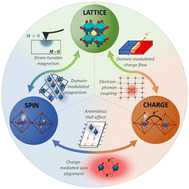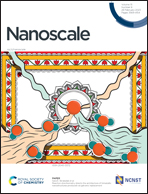Perspectives on oxide heterostructures – the curious case of γ-Al2O3/SrTiO3
Abstract
The heterostructure formed by depositing nanoscale thin films of spinel γ-Al2O3 on perovskite SrTiO3 exhibits a range of exciting properties including room temperature epitaxial growth, high electron mobility, strain-tunable magnetic order, and a symmetry-related reordering of the conduction bands. In comparison to the benchmark LaAlO3/SrTiO3 heterostructure, the γ-Al2O3/SrTiO3 heterostructure has been more sparsely investigated, which leaves plenty of room for scientific and technological discoveries. In this perspective article, I describe the key findings of the γ-Al2O3/SrTiO3 heterostructure and propose five directions for future research: (1) an exploration of novel phenomena emerging when relaxing the conventional epitaxial constraint of matching crystal structures across the interface, (2) a dynamic switching of a strong polarization through nanoscale electromigration of aluminum vacancies, (3) autonomous and forced enhancement of the electron mobility via oxygen vacancy diffusion, (4) writing and erasing of magnetic and conducting nanolines using ferroelastic domain walls, and (5) a multiferroic state formed by combining ferroelectricity, ferromagnetism, and ferroelasticity. The proposed research directions may shed light on both fundamental aspects of the heterostructure and pave the way for applications within green energy devices and nanoelectronics.

- This article is part of the themed collections: Recent Review Articles and Nanoscale 2023 Emerging Investigators


 Please wait while we load your content...
Please wait while we load your content...